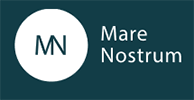The Anatomy and Physiology of Sports Massage epub
Author: Portia B. Resnick
This title will be released on January 09, 2026
$39.95 USD
Apply anatomy and physiology concepts to improve your manual therapy practice.
To maximize treatment outcomes from manual therapy, you must understand both anatomy and the physiological response of the body to various techniques. The Anatomy and Physiology of Sports Massage guides you through this process by combining anatomical landmarks for palpation with the function of the muscles to help you pair specific treatment techniques with the intended response. You’ll get guidance on different types of manual therapies and their role in recovery from exercise as well as in treating and preventing chronic musculoskeletal injuries.
Photos throughout the book demonstrate hands-on treatments for each area of the body and are overlaid with anatomical illustrations, making it easy to pinpoint the muscles targeted by each therapy. The massage treatments are accompanied by explanations of how to perform the techniques, and descriptions of each muscle outline the origin, insertion, and action of the muscle at the joint, along with stressor considerations that are important to take into account as you work with an athlete.
Other features include advice on considerations for sports massage, such as avoiding lotions in certain scenarios, and Why Do We Care? sidebars that reiterate the practical benefits for athletes or clients. Additional information about the types and benefits of self-care treatments is also included:
- Compressive massage tools, such as foam rollers
- Decompression items, such as therapeutic tape
- Percussive techniques that use vibration, such as a massage gun
- Hydrotherapy that uses hot or cold water, such as saunas or cold plunges
The Anatomy and Physiology of Sports Massage helps you understand the why behind many of the techniques and responses seen in manual therapy. Whether you are a seasoned clinician, a clinical instructor, an educator, or a student, there is value in reviewing your practice to ensure that you are providing the best possible therapies and techniques that match desired client outcomes.
Earn continuing education credits/units! A continuing education exam that uses this book is also available. It may be purchased separately or as part of a package that includes both the book and exam.
Audience
Massage therapists, athletic trainers, physical therapists, physiotherapists, and strength and conditioning coaches who use manual therapy with their athletes.
Foreword by Ruth Werner
Acknowledgments
Introduction: Unraveling Some of the Mystery
Part I. Foundations
Chapter 1. Muscles and Fascia
Chapter 2. The Physiological Effects of Manual Therapies
Chapter 3. Types of Manual Therapies
Chapter 4. Structural Versus Functional Considerations
Chapter 5. Common Compensations in Sport
Part II. Techniques
Chapter 6. Shoulder, Arm, Forearm, and Hand
Chapter 7. Upper Back and Neck
Chapter 8. Lower Back and Abdomen
Chapter 9. Hip, Thigh, and Knee
Chapter 10. Lower Leg and Foot
Chapter 11. Self-Care





 Muscle and fascia connection
Muscle and fascia connection The three true joints of the shoulder complex
The three true joints of the shoulder complex Posterior forearm treatment
Posterior forearm treatment Spiraling of the abdomen
Spiraling of the abdomen